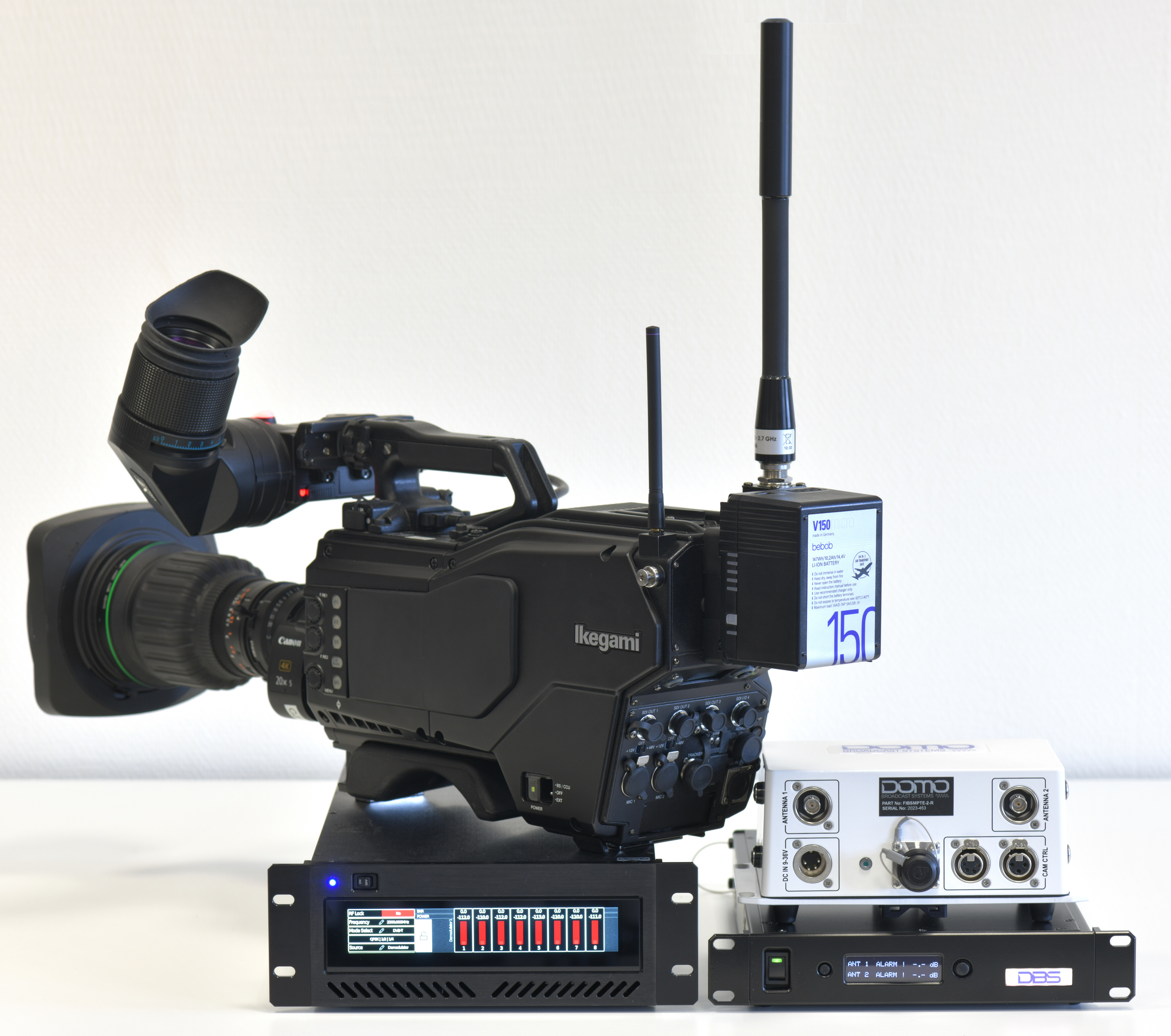Ikegami Introduces Wireless Version of its UHK-X700 Television Camera
The UHK-X700RF, to be shown at IBC2025, has the same feature set, operational ergonomics, compact size and light weight as its wired sister model UHK-X700

MAHWAH, NJ—Ikegami has introduced the the UHK-X700RF wireless portable camera, a new addition to its UNICAM-XE product range with the same feature set, operational ergonomics, compact size and light weight as its wired sister model UHK-X700.
Ikegami will be showing the new camera at Stand 12.A31 in the RAI Amsterdam during the IBC Show, Sept. 12-15.
“UNICAM-XE series cameras are designed to allow fast and easy setup, versatile operation and secure delivery of broadcast quality video,” says Gisbert Hochguertel, Ikegami Europe Product Specialist. “They share the robust build quality and intuitive control structure that have made Ikegami UNICAM camera systems a popular choice among television control producers in Europe and around the world. The UHK-X700RF opens a wide vista of creative perspectives for applications such as news, OB sports and coverage of stage events. Even in fully rehearsed studio projects, it offers producers the freedom to introduce unusual-angle shots at short notice.”
The UHK-X700RF is equipped with a native UHD-sensor (3840 x 2160 pixels) with a global shutter architecture designed to capture natural images even under challenging situations. The wireless camera supports UHD (2160@50p/59.94p) and HD (1080@50p/i, 59.94p/i) frame rates as a standard feature.
Like all other cameras within the UNICAM-XE family, the UHK-X700RF incorporates a dual filter wheel enabling separate control of incoming light and colour temperature. Space is included to mount any desired effect filter or an optical low-pass filter to further reduce aliasing and moiré artifacts. Automatic optical vignetting correction is supported when using OVC-compatible B4 bayonet mount zoom lenses.
The transmitter in the UHK-X700RF operates in the 2 to 2.7 GHz band, accessible in 250 kHz tuning steps, with an output power of 100 mW. Two antennas mounted at the rear of the camera comprise one for the main video signal plus a smaller one for telemetry data.
Multichannel antenna diversity is a standard feature, providing robust signal delivery in a wide range of transmission environments. Encoding is fast, typically just 40 ms input to output at UHD or HD resolution. Transmission range in a standard configuration is approximately 550 yards. If the receiving antennas are positioned far away from the base unit, it is possible to cascade several IP-Mesh data transceivers, allowing for up to 22 transceivers to be used in a single system.
The professional video industry's #1 source for news, trends and product and tech information. Sign up below.
The receiver/decoder for the main video signal occupies a 19 inch half-rack width chassis. It employs DVB-T modulation in QPSK, 16QAM and 64QAM. Bandwidth is switchable between 8 MHz, 7 MHz, 6 MHz and 5 MHz. To assure robust signal quality, even under critical circumstances, the DVB-T guard interval can be switched in four discrete steps: 1/32, 1/16, 1/8, 1/4. Forward error correction is also flexibly selectable from 1/2, 3/4, 5/6, 7/8 and 2/3 as a default value. H.265-HEVC, H.264-AVC and MPEG-2 video coding are selectable via the control menu.
Almost all conventional broadcast frame rates for HD and UHD are supported in ITU-R BT.709 SDR and ITU-R BT.2100 HDR as well as BT.2020 wide colour gamut. The receiver/decoder comes equipped with four SDI outputs and supports 1.5G, 3G and 12G SDI formats including embedded audio. It also features two XLR three-pin analog audio outputs, a BNC genlock input and a four-pin XLR 12 volt DC power input.
In its basic configuration, the receiver/decoder can connect directly to up to eight downconverters (four pairs of antennas) via conventional BNC cables. Up to 100m cable extension is supported. The distance between the receiving antennas and the Sapphire-RXD4 can be increased using a fibre base unit in combination with a fibre extension unit. This can be achieved via conventional SMPTE hybrid fibre/copper cable with LEMO connectors, allowing an extension of about 1,000 yards. The base unit will also supply power to the extension unit via the same cable.
